Alfred McCoy: The Politics of Heroin and War
The failure of the Afghanistan war in which Australia, as a loyal ally of America, has been a major contributor has fueled opium and heroin production in the region to unprecedented levels, the world’s leading expert on global drug trafficking has warned.
A tiny, landlocked, poverty-stricken nation has brought the combined military might of the US, the UK and Australia to the edge of defeat. And it all boils down to a small pink flower — the opium poppy.
Dr Alfred McCoy first came to prominence in 1972 with his groundbreaking book The Politics of Heroin in Southeast Asia, which was ensured popularity after the CIA tried to ban it.
His phone was tapped, he was audited by the IRS, and he was investigated and spied on by the FBI.
The Politics of Heroin is regarded as a foundation text and frequently referred to by other researchers in the field. He stated that the Central Intelligence Agency was knowingly involved in the production of heroin in the Golden Triangle of Burma, Thailand, and Laos.
Following a sojourn in Australia as a visiting academic, he wrote Drug Traffic: Narcotics and Organised Crime in Australia.
His other books include A Question of Torture: CIA Interrogation, from the Cold War to the War on Terror and most recently In the Shadows of the American Century.
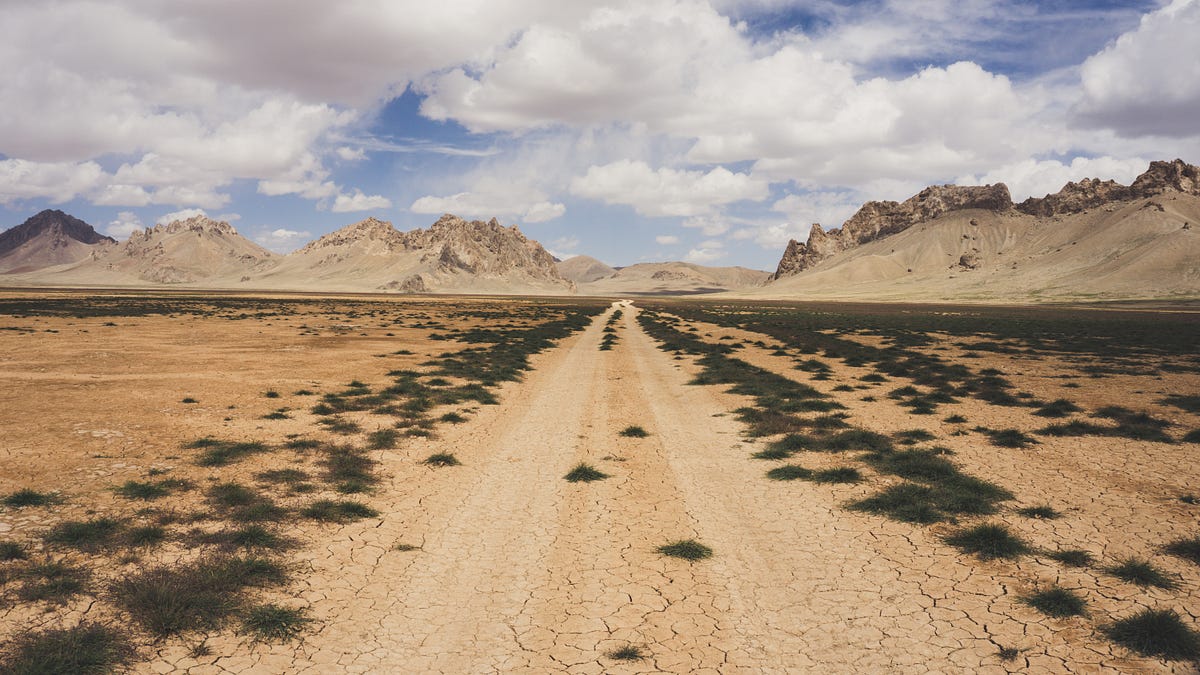
Dr McCoy says:
The fitful yet relentless rise in Afghanistan’s opium production from about 100 tons in 1978 to 9,000 tons in 2017, can be traced to a convergence of complex factors.
The slowly declining production in Southeast Asia’s Golden Triangle through UN and US counter-narcotics, the failed Nixon drug war of the 1970s that stimulated narcotics trafficking on five continents, the collapse of the Iron Curtain facilitating a proliferation of opiates across the breadth of Eurasia, and decades of warfare.
As long as the opium harvest continues to boom, the villages of Afghanistan can produce new crops of teen-aged fighters faster than allied or Afghan soldiers can shoot them.
The United Nations Office on Drugs and Crime released a report last year which recorded an increase in opium production by by 63 per cent; from 201,000 hectares in 2016 to an estimated 328,000 hectares in 2017.
UNODC said that it would be possible to produce between 550 and 900 tons of export-quality heroin from the poppies harvested throughout the country during 2017.
The report highlighted that the record level of cultivation creates multiple challenges for the country and its neighbours, as opiate-based illegal drugs make their way across the Afghan border.
Poppy production and illicit trafficking of opiates also fuel political instability, and increase funding to terrorist groups in Afghanistan who profit from the trade.
The report revealed that the record-high production led to a rapid expansion of the illegal economy in 2017. Being worth between $4.1 billion to $6.6 billion in 2017 — or 20 and 32 per cent of gross domestic product — the value of the opiate-based economy exceeded by far, the value of Afghanistan’s legal exports of goods and services during 2016.
In a reflection of what he has learnt from 50 years of writing on the subject, Decriminalizing the Drug War? Calculating the Damage from a Century of Drug Prohibition, published in Tom Dispatch alternate news blog, McCoy condemns misguided policies which have caused so much damage:
At the broadest level, the past half-century turns out to have taught me that drugs aren’t just drugs, drug dealers aren’t just “pushers,” and drug users aren’t just “junkies” (that is, outcasts of no consequence). Illicit drugs are major global commodities that continue to influence U.S. politics, both national and international. And our drug wars create profitable covert netherworlds in which those very drugs flourish and become even more profitable. Indeed, the U.N. once estimated that the transnational traffic, which supplied drugs to 4.2% of the world’s adult population, was a $400 billion industry, the equivalent of 8% of global trade.
For over a century now, states and empires have used their expanding powers for moral prohibition campaigns that have periodically transformed alcohol, gambling, tobacco, and, above all, drugs into an illicit commerce that generates sufficient cash to sustain covert netherworlds.
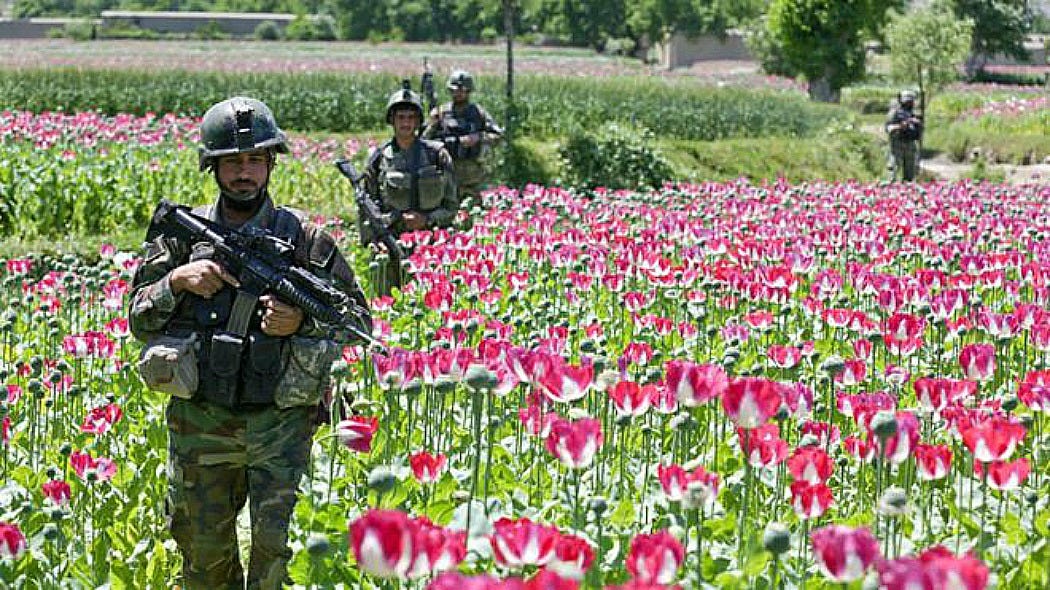
The influence of illicit drugs on U.S. foreign policy was evident between 1979 and 2019 in the abysmal failure of its never-ending wars in Afghanistan. Over a period of 40 years, two U.S. interventions there fostered all the conditions for just such a covert netherworld. While mobilizing Islamic fundamentalists to fight the Soviet occupation of that country in the 1980s, the CIA tolerated opium trafficking by its Afghan mujahedeen allies, while arming them for a guerrilla war that would ravage the countryside, destroying conventional agriculture and herding.
In the decade after superpower intervention ended in 1989, a devastating civil war and then Taliban rule only increased the country’s dependence upondrugs, raising opium production from 250 tons in 1979 to 4,600 tons by 1999.
This 20-fold increase transformed Afghanistan from a diverse agricultural economy into a country with the world’s first opium monocrop — that is, a land thoroughly dependent on illicit drugs for exports, employment, and taxes. Demonstrating that dependence, in 2000 when the Taliban banned opium in a bid for diplomatic recognition and cut production to just 185 tons, the rural economy imploded and their regime collapsed as the first U.S. bombs fell in October 2001.
To say the least, the U.S. invasion and occupation of 2001–2002 failed to effectively deal with the drug situation in the country. As a start, to capture the Taliban-controlled capital, Kabul, the CIA had mobilized Northern Alliance leaders who had long dominated the drug trade in northeast Afghanistan, as well as Pashtun warlords active as drug smugglers in the southeastern part of the country. In the process, they created a post-war politics ideal for the expansion of opium cultivation.
McCoy concludes, even though output surged in the first three years of the U.S. occupation, Washington remained uninterested, resisting anything that might weaken military operations against the Taliban guerrillas.
Well they’re interested now, all these years later, as the West’s longest war grinds on and as Islamic State grow ever more powerful in Afghanistan — and the Taliban have gone nowhere.
America has been in almost continuous combat since 2001, spending more than $1300 billion on the Afghanistan War and losing more than 2400 soldiers. Australia has spent some $10 billion and sacrificed the lives of 41 soldiers.
The allies face defeat simply because they cannot control the swelling surplus from the country’s heroin trade, Dr McCoy argues.
Every spring the opium harvest refills the Taliban’s coffers.
In one of history’s bitter ironies, Dr McCoy argues America’s military intervention has transformed Afghanistan into the world’s first true narco-state — a country where illicit drugs dominate the economy, define political choices and determine the fate of foreign interventions.
Opium eradication and crop substitution have been worse than an absolute failure.
Many of the programs, such as irrigation and ‘market roads’, served as agricultural inputs that actually stimulated increased opium production.
Within five years after the US intervention of October 2001 the Taliban had taken control of the traffic to fund guerrilla warfare against the allied forces, reviving its fortunes from near extinction back in 2001 to controlling over half the countryside today.
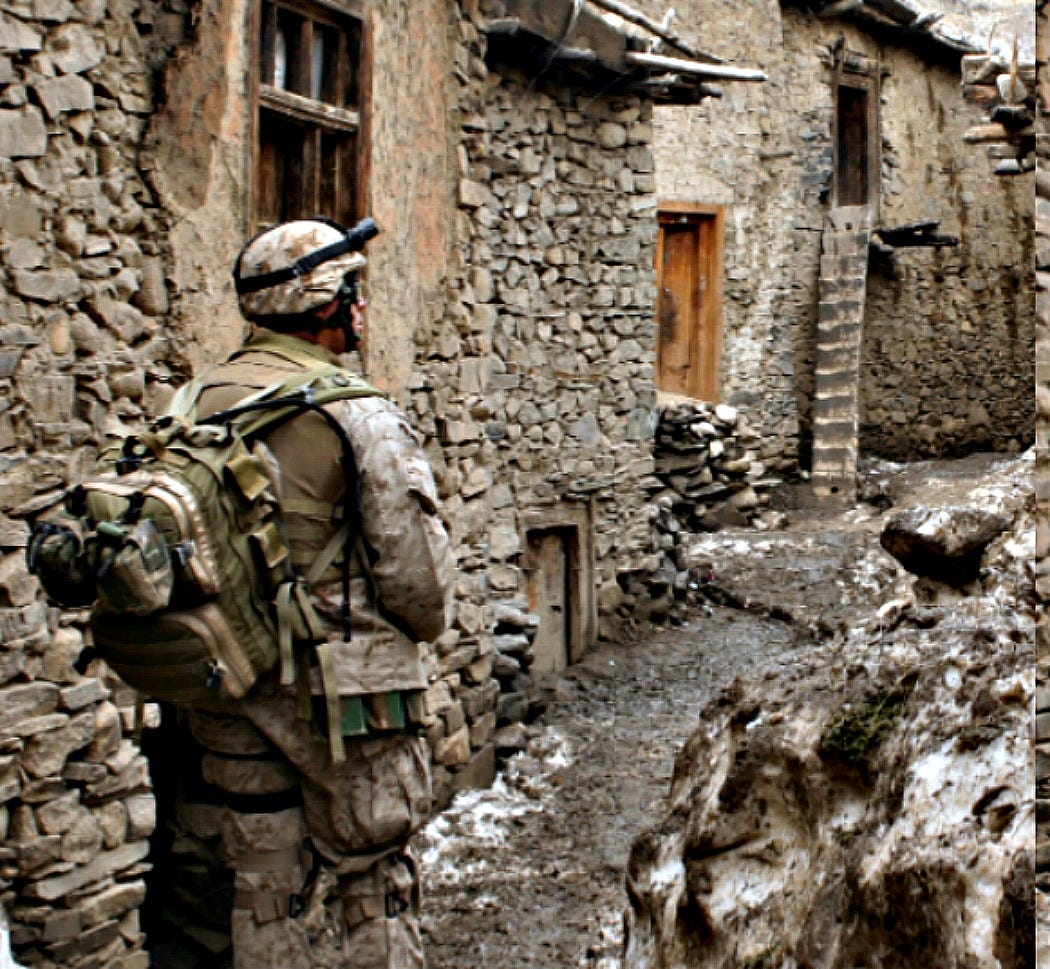
Afghanistan remains gripped by violence, with with multiple attacks and declining security. The country has replaced Syria as the most strife-torn country on earth on the annual Global Peace Index.
In Afghanistan, the Taliban and other militant groups continue to launch near-daily attacks on Afghan security forces, government forces, and civilians, even as peace efforts have been gaining momentum to put an end to the almost 18-year-long war.
Mohib Iqbal, a research fellow at the institute, says Afghanistan “is now the world’s most violent conflict with the highest number of deaths from war and terrorism”.
The world’s longest running war has little public support in the countries sacrificing their soldiers and their resources.
A majority of Americans believe it is time to get out of Afghanistan.
Seventeen years since the U.S. invasion of Afghanistan, a new poll reveals that Americans question the worthiness of the ongoing war there, want the United States to pull troops out of the country, and would like their leaders to exercise more restraint when it comes to getting involved in conflicts around the world. The survey, commissioned by the Charles Koch Institute and RealClearPolitics and conducted by YouGov, found that military veterans were even more likely to hold these views.
Researcher at the Charles Koch Institute William Ruger says:
After nearly two decades of fighting in Afghanistan, Americans — including veterans — rightly recognize the war has not been going well and that we are strategically adrift. It is little wonder that a majority of Americans think we ought to decrease troop levels or even bring all of our forces home. The president should pay more attention to the American people’s realistic take than wishful thinking ‘experts’ who argue we need to stay the course.
As a report earlier in this month in The New York Times suggests, all the sacrifice has been to no avail.
Two years ago, Pentagon officials said that American forces in the remote reaches of Afghanistan could defeat the Islamic State’s offshoot here by the end of 2017.
This month, American Special Forces in eastern Afghanistan were still fighting, with no end in sight.
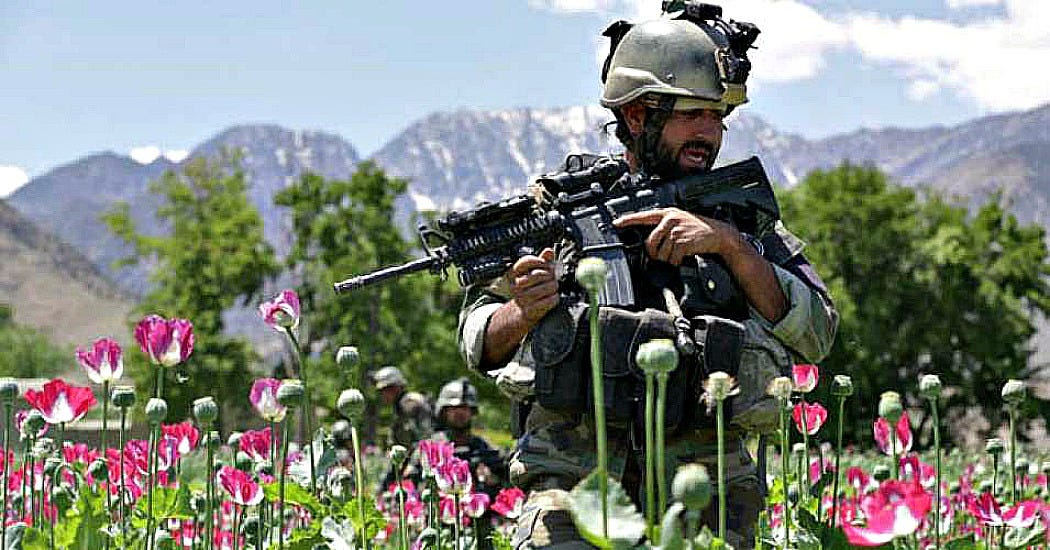
During a visit by a New York Times reporter to their dusty army outpost, in the eastern province of Nangarhar, the Americans pointed out the ridges and valleys at the foot of the snow-capped Spin Ghar mountains: There, they noted, was the start of the Islamic State’s territory, in some of the most forbidding terrain in Afghanistan.
The extremist group is growing, able to out-recruit its casualties so far, according to military officials. It is well funded by illicit smuggling and other revenue streams. And in the eastern part of the country, Islamic State fighters are waging a war of terrain that the United States military can — for now — only contain, those officials said.
In the Afghan offshoot’s early months, Islamic State leadership in the Middle East sent money to help it along. But officials say the group has approached self-sufficiency by extorting money from locals along with smuggling timber, drugs and raw earth material.
Islamic State fighters in Afghanistan are paid significantly more per month than their Taliban counterparts, in some regions by hundreds of dollars. And they have been able to keep growing.
It is as if, in some parallel world, an experimenter had dialled up: What would happen if America learnt nothing from the Vietnam War?
It is a dangerous vortex which not only costs the US a fortune, but sucks in its allies; at their great cost. America, as Australian academics frequently point out, has proven to be a very dangerous ally indeed.
Yet the Australian government continues to support military action.
Then Defence Minister Marise Payne said in an official statement in 2017 that Australia remained steadfast: “Australian personnel are in integral roles and bring their skills and expertise. It is critical that Afghanistan does not once again become a breeding ground for terrorists.“
Her views run counter to many senior Australian analysts.
“At this point, there should be enough informed opinion among Australian veterans of Afghanistan — military, diplomatic, and developmental — for a sober assessment of the chances of future success,” Dr McCoy said.
“If the government of the day has decided to re-enlist in Washington’s endless war, that indicates that Canberra is not seeking the counsel of these informed critics, is ignoring such cautionary counsel to curry favor with the Trump White House, and is not weighing the likely costs, now and in the future, of such a fraught, failing commitment.”
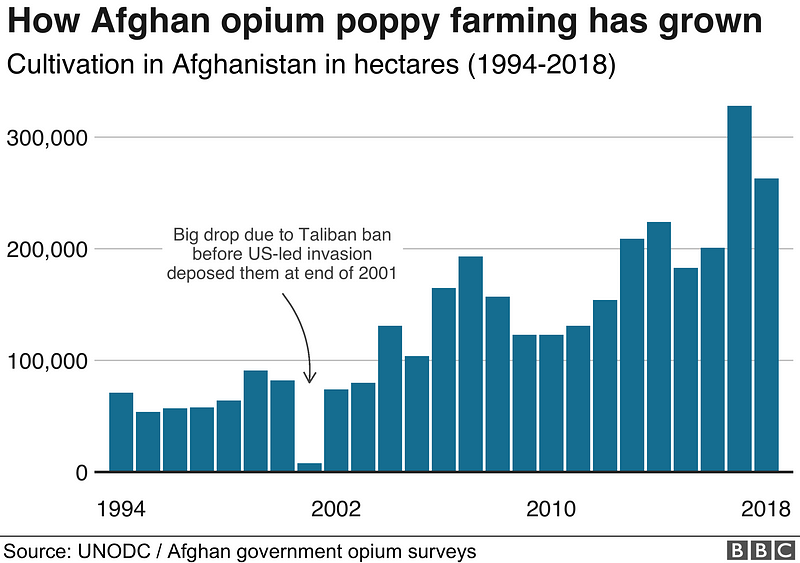
In a special report earlier this year the BBC record:
The Special Inspector General for Afghanistan Reconstruction (SIGAR), John Sopko, does not mince words, labelling Afghanistan a “narco-state”.
He hopes the current talks between US official and the Taliban will lead to some kind of peace settlement but believes the growth of this vast opium economy has made Afghanistan increasingly unstable.
Opium now accounts for around a third of Afghanistan’s GDP, he says. It is by far the country’s biggest cash crop and provides almost 600,000 full-time jobs.
This, despite the fact that the US military has spent $1.5m a day on counter narcotics since the invasion in October 2001, or almost $9bn.
And remember, that is on top of the more than $1 trillion spent fighting the war itself.
“To put it bluntly”, he says, “these numbers spell failure.”
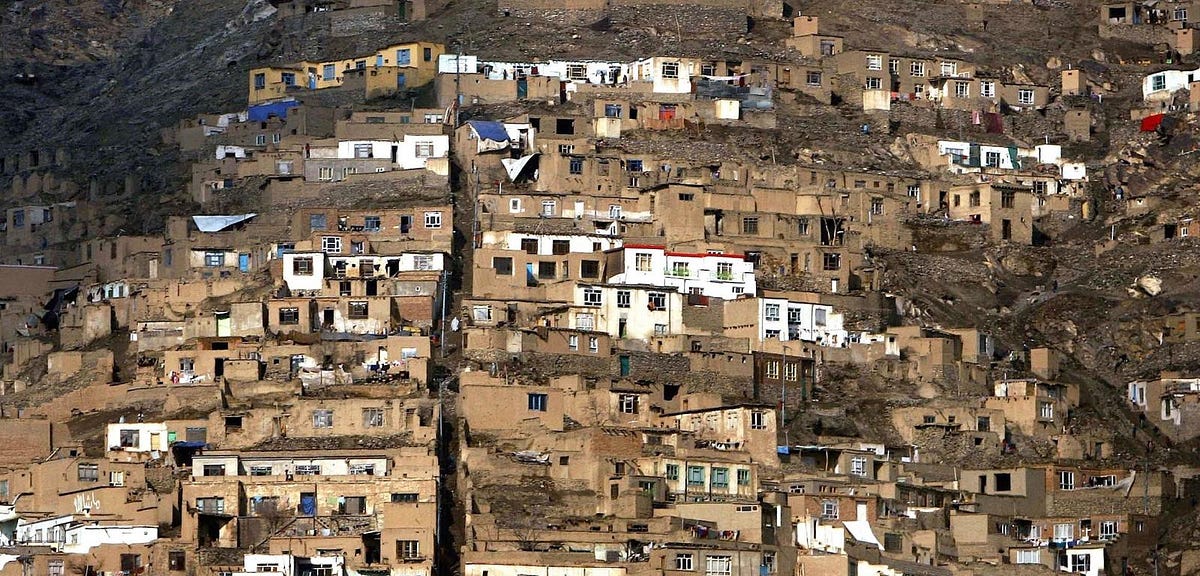

2 Pingbacks